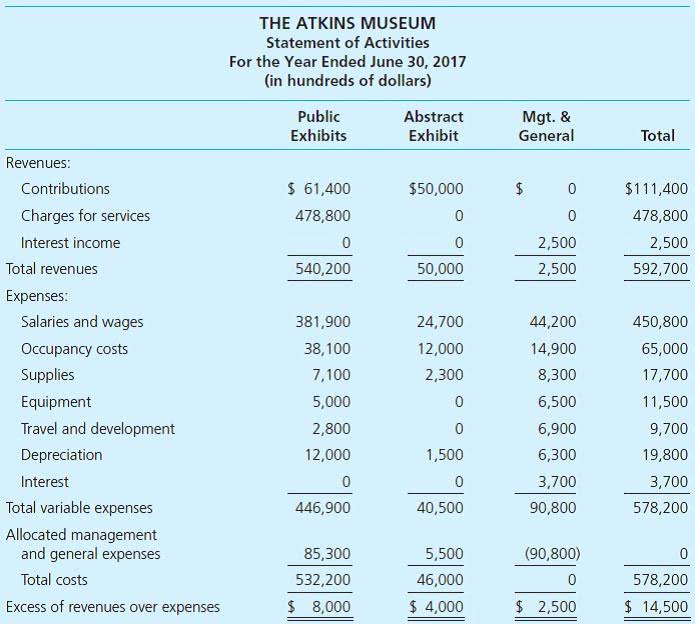
It is described as “contra” because having a credit balance in an asset account is contrary to the normal or expected debit balance. (A debit balance in a contra asset account will violate the cost principle.) Learn more about contra asset accounts. The sales returns contra sales account records the sales value of goods returned by a customer. The account is normally a debit balance and in use is offset against the sales account which is normally a credit balance. Consequently the net balance of the two accounts shows the net value of the sales made by the business for the accounting period. The main advantage of using separate contra revenue accounts is that each one provides targeted information about the individual deductions taken from sales.
- Contra accounts exist when the account reported on the balance sheet needs to be reduced by a different account to show its true value.
- These three types of contra accounts are used to reduce liabilities, equity, and revenue which all have natural credit balances.
- Schedule regular reviews of your allowance and discount policies so they remain competitive and relevant to your market conditions.
- A contra liability is an account in which activity is recorded as a debit balance and is used to decrease the balance of a liability.
- This also ensures accurate financial statements, which is essential for meeting regulatory requirements and maintaining the trust of stakeholders.
Understanding Contra in Accounting: Definition, Examples, and Applications
If the amounts of these line items are minimal, they may be aggregated for reporting purposes into a single contra revenue line item. A sample presentation of contra revenue appears in the following exhibit, which contains the revenue-related line items found at the top of an income statement. Sales Returns and Allowances is a contra-revenue account deducted from Sales. It is a sales adjustments account that represents merchandise returns from customers, and deductions to the original selling price when the customer accepts defective products.
Contra equity

The allowance for https://www.bookstime.com/articles/nonmanufacturing-overhead doubtful accounts is used to reduce the net income by the estimated amount of uncollected receivables. This account helps to give a more accurate picture of the company’s financial position. This article will give you the definition of contra in accounting, talk about different contra accounts, and give examples.
What’s the Significance of a Contra Account in Business?
- A contra equity account is an account that is used to offset another equity account on the balance sheet.
- Regular reviews and adjustments based on comprehensive data analysis can significantly aid in maintaining healthy profit margins.
- All in all, contra accounts are an important tool for businesses to use to understand their financial standing better.
- Accounting software can simplify the management of and reporting from your ledger.
- In a report, layering on that additional context can be easy, but in a general ledger, you have few options for conveying nuance and subtlety.
The two most common contra accounts are the allowance for doubtful accounts/bad debt reserve, which is subtracted from accounts receivable, and accumulated depreciation, which is subtracted from fixed assets. A contra revenue represents any deductions or offsets that need to be removed from gross revenue to provide a clearer understanding of actual income — such as in the example just provided. These accounts will typically help track sales discounts, product returns, and allowances (e.g., a price reduction for a good with minor defects). If customers return contra revenue goods, the Sales Returns and Allowances account, a contra revenue account, is credited to offset the Sales account. Contra accounts are used to reduce the original account directly, keeping financial accounting records clean. The difference between an asset’s balance and the contra account asset balance is the book value.

Accounts receivable is rarely reported on the balance sheet at its net amount. Instead, it is reported at its full amount with an allowance for bad debts https://x.com/BooksTimeInc listed below it. Maybe more importantly, it shows investors and creditors what percentage of receivables the company is writing off. Expenses are the costs of doing business, but not all costs are expenses. In accounting terms, an expense is a cost incurred to produce revenue reported on the income statement.


The accumulated depreciation account has a credit balance and is used to reduce the carrying value of the equipment. The balance sheet would report equipment at its historical cost and then subtract the accumulated depreciation. Contra liability, equity, and revenue accounts have natural debit balances. These three types of contra accounts are used to reduce liabilities, equity, and revenue which all have natural credit balances. Therefore, for these three, the debit balance actually represents a negative amount.
